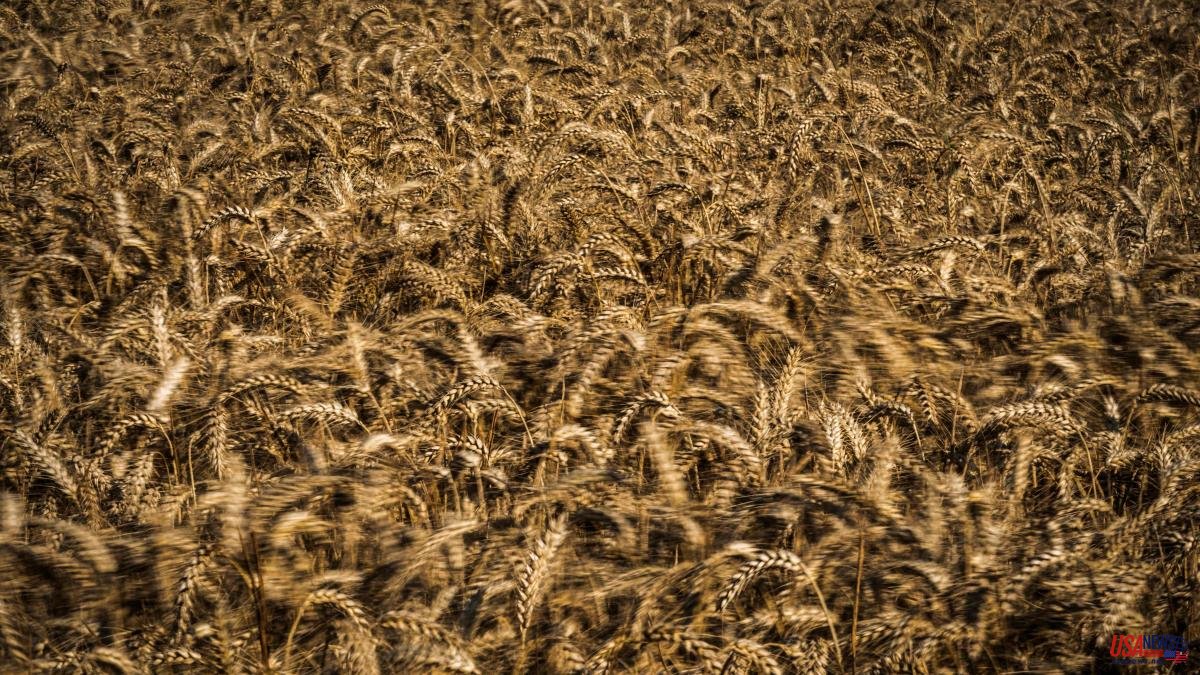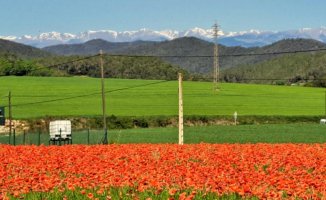Despite being responsible for managing the economy in the midst of an invasion, Serguiy Marchenko displays disconcerting optimism. The Russians have occupied or blockaded their country's main ports and forced the closure of most businesses, but Ukraine's economy minister radiates calm. "The situation is very difficult, I don't mean to downplay it," he says over a latte in a fancy cafeteria near the ministry. "But we can handle it." An air-raid siren interrupts the interview, although he simply ignores it.
The reasons not to panic are quite numerous. Ukraine entered the war in good shape, with the economy growing at an annualized quarter-on-quarter rate of almost 7%; firm prices in grain, iron and steel exports; a well-regulated banking sector; and a public deficit of less than 3% of GDP last year. The debt was just below 50% of GDP, a figure that many finance ministers can only dream of. It has an impressively digitized tax and benefits system that allows revenue to continue to flow seamlessly from the parts of the economy that are still functioning. Public pensions and salaries continue to be paid, even in Russian-occupied areas, thanks to robust digital systems and a surprisingly intact internet. For the most part, companies continue to pay their employees, even though they cannot operate normally, or at all. Amazingly, payroll taxes are only down 1%, says the minister.
However, it is not an easy thing. According to the World Bank, Ukraine's GDP could shrink by 45% in 2022. ("Our estimate is 44%," says Marchenko with a smirk.) Both estimates are, of course, wildly uncertain. Customs revenue, a major part of tax revenue, has fallen to a quarter of its pre-war level due to reduced imports and the suspension of many duties. Military salaries are another big burden. All of this translates into a funding gap of about $5 billion a month, he says. That is, 5% of the reduced Ukrainian GDP for each month that the war lasts.
How to cover it? In part, Marchenko details, by making the central bank print more money. In part, too, through the issuance of war bonds for which the government today pays around 11% interest, a percentage lower than the rate of inflation. However, the main source will have to be foreign. And to that, explains the Minister of Economy, he dedicates most of the day to pressuring foreign governments to help him. His greatest hopes are pinned on the United States. On April 28, President Joe Biden announced that he would ask Congress for authorization to dedicate another $33 billion in new funds to Ukraine, since the previous instrument has almost been exhausted. The House of Representatives has voted to increase the amount to $40 billion. Most of the money will go to weapons, but at least 8.5 billion will be for economic support. "This is good news, but what will the US package look like and when will it arrive? We don't know," says the minister.
The International Monetary Fund also collaborates. He has encouraged the United States and other countries to take over part of Ukraine's special drawing rights allocation in the fund, effectively funneling hard currency to the Kyiv government. However, the end result of such calls is that, in the second quarter of this year, Ukraine has only received subsidies totaling 4,500 million dollars, compared to a fiscal deficit of 15,000 million.
It is not sustainable, admits Marchenko, who fears that if the war lasts more than another "three or four months", painful measures involving huge tax increases and deep spending cuts will be necessary. The real fear is that what has been a spontaneous and largely market-driven economy in recent years will be subjected to a wave of nationalizations that will undo years of hard-won progress.
And now, literally, an even more immediate problem arises. The planting season for wheat, barley, sunflower (for oil) and other cereals and basic products has already ended throughout the country. Surprisingly, it has been possible to plant 80% of the usual crop; a crop sometimes sown by brave farmers in bulletproof vests. But what to do with it? Harvesting should not be a big problem as the fronts have receded and it seems unlikely that Russia will be able to gain more ground. The hard part will be getting the products out of the country.
The presence of the Russian navy in the Black Sea, as well as the defensive deployment of mines by the Ukrainian side, means that Odessa, the country's main port, is completely closed. The same happens with the second and third ports, located nearby. Berdyansk and Mariupol, the fourth and fifth, are under Russian control. And it's not like you can store much grain either; the country's silos are almost all filled with the recently harvested winter harvest, which under normal conditions would have already been shipped abroad.
Mustafa Nayyem, a former journalist and activist turned Ukraine's Deputy Minister of Infrastructure, is tasked with solving the problem. If the grain cannot go out by sea, it will have to travel by road and rail, through Poland, Romania and Hungary. However, problems abound, he says. The roads cannot handle so much heavy traffic; alternate ports have limited free capacity.
Worst of all, crossing Ukraine's borders with the European Union is complicated. Customs and phytosanitary controls already cause queues of 10 kilometers at border points. The rules of the community club state that, as Ukraine is not a member state, the number of trucks that can enter is limited. The bureaucracy contributes to clogging all these tasks; if they are not unblocked, Ukraine, Europe and the whole world will face severe food shortages after the September harvest. "We need all European countries to allow free access to our trucks," says the minister. "They don't seem to be aware of the large amount of wheat that is about to reach them."
© 2022 The Economist Newspaper Limited. All rights reserved.
Translation: Juan Gabriel López Guix
4













